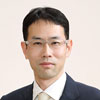Patients who underwent a surgical procedure to alleviate voice problems caused by laryngeal muscle spasm are still satisfied with the results three years on, a Japanese clinical study finds.
Spasmodic dysphonia affects around five out of every 100,000 people in Japan. It causes spasms in the laryngeal muscles, which control sound production from the vocal cords, affecting the ability to speak smoothly. It is not known how many people worldwide are affected by the condition, or what causes it.
Ear, nose, and throat experts, Tetsuji Sanuki, of Kumamoto University and Eiji Yumoto, of Asahino General Hospital, in Kumamoto, Japan followed the progress of 47 patients who underwent a surgical procedure called type 2 thyroplasty which introduces titanium bridges to treat ‘adductor spasmodic dysphonia’, in which muscle spasms cause the vocal cords to slam shut.
Questionnaires were given to the patients before the procedure and regularly in the months and years after to quantify their perception of their vocal impediment and how well the surgical site healed. In the questionnaires, patients rated tightness, interruption and tremors in their voices according to four grades: none, little, sometimes or always.
“We found that the scores after the first month, and at one, two and three years post-operation were relatively the same, with little variation,” says Sanuki, indicating that improvements were long lasting. None of the patients experienced issues with the surgical site on the throat and almost all patients were satisfied with their voices.
In the 1990s, the Japanese otolaryngologist, Professor Nobuhiko Isshiki, pioneered a procedure, called type 2 thyroplasty, to treat symptoms of adductor spasmodic dysphonia. A modified technique, type 2 thyroplasty with titanium bridges, was developed in 2002. It involves cutting an opening in the cartilage at the front of the throat under local anesthesia. The patient is instructed to say a series of words and sentences while the surgeon delicately pulls apart the two edges of the cartilage. The patient lets the surgeon know when they are most satisfied with their voice, at which point titanium bridges are inserted into the cartilage to maintain that optimal space.
Other procedures are more commonly used elsewhere in the world, but symptoms often recur. Botox injections, the go-to procedure in the U.S., relieve symptoms temporarily, but must be repeated about four times a year. Cutting the nerve that supplies the muscles of the larynx is also a common procedure, but it is invasive and there are no large-scale studies to demonstrate its long-term efficacy, says Sanuki.
“Type 2 thyroplasty is a little different from other surgeries because it does not directly approach the source of the problem, but rather the symptoms…which is possibly why it has been looked on with some suspicion,” says Sanuki. “From a surgical perspective, I can see why type 2 thyroplasty with titanium bridges might seem to be an incomplete answer to spasmodic dysphonia; but patients don’t seem to mind as long as their symptoms are satisfactorily resolved,” he adds.
Sanuki is currently leading a global clinical trial of the procedure involving participants from the U.S., the U.K., South Korea and Japan, to establish it as a standard surgical treatment for spasmodic dysphonia.
Type 2 thyroplasty will be covered by Japan’s national health insurance plan from April 2018.
References
Sanuki, T. & Yumoto, E. Long-term evaluation of type 2 thyroplasty with titanium bridges for adductor spasmodic dysphonia. Otolaryngology—Head and Neck Surgery 157, 80–84 (2017).| article
About the Researcher

Tetsuji Sanuki, Associate Professor, Nagoya City University
Tetsuji Sanuki is currently associate professor of otolaryngology at Nagoya City University’s Graduate School of Medical Sciences in Japan. His previous post was with Kumamoto University. Sanuki has also had stints at Washington University School of Medicine in the US and Isshiki Clinic Kyoto Voice Surgery Center in Kyoto, Japan. His primary research interests are in laryngology and endoscopic sinus surgery.



